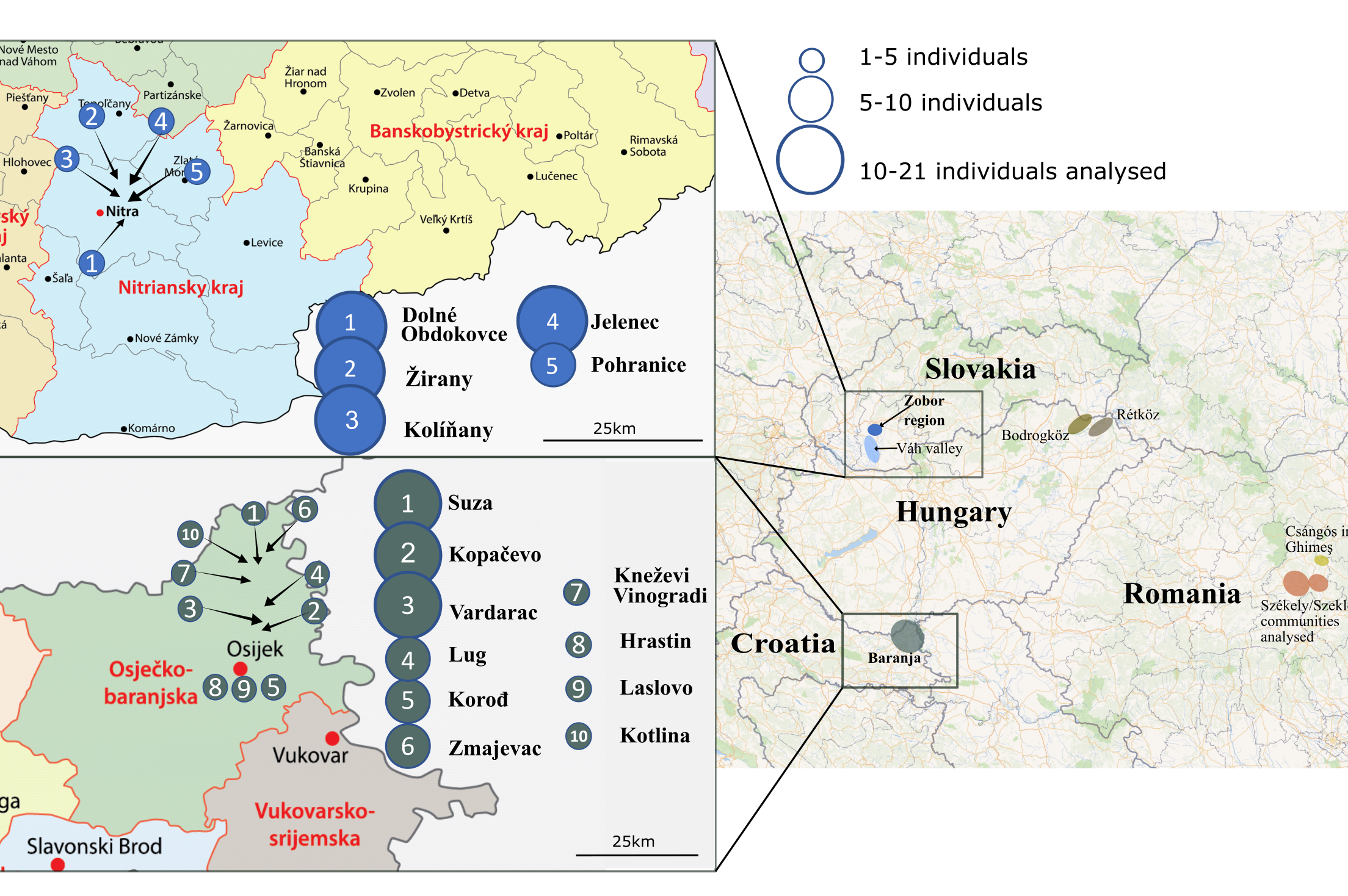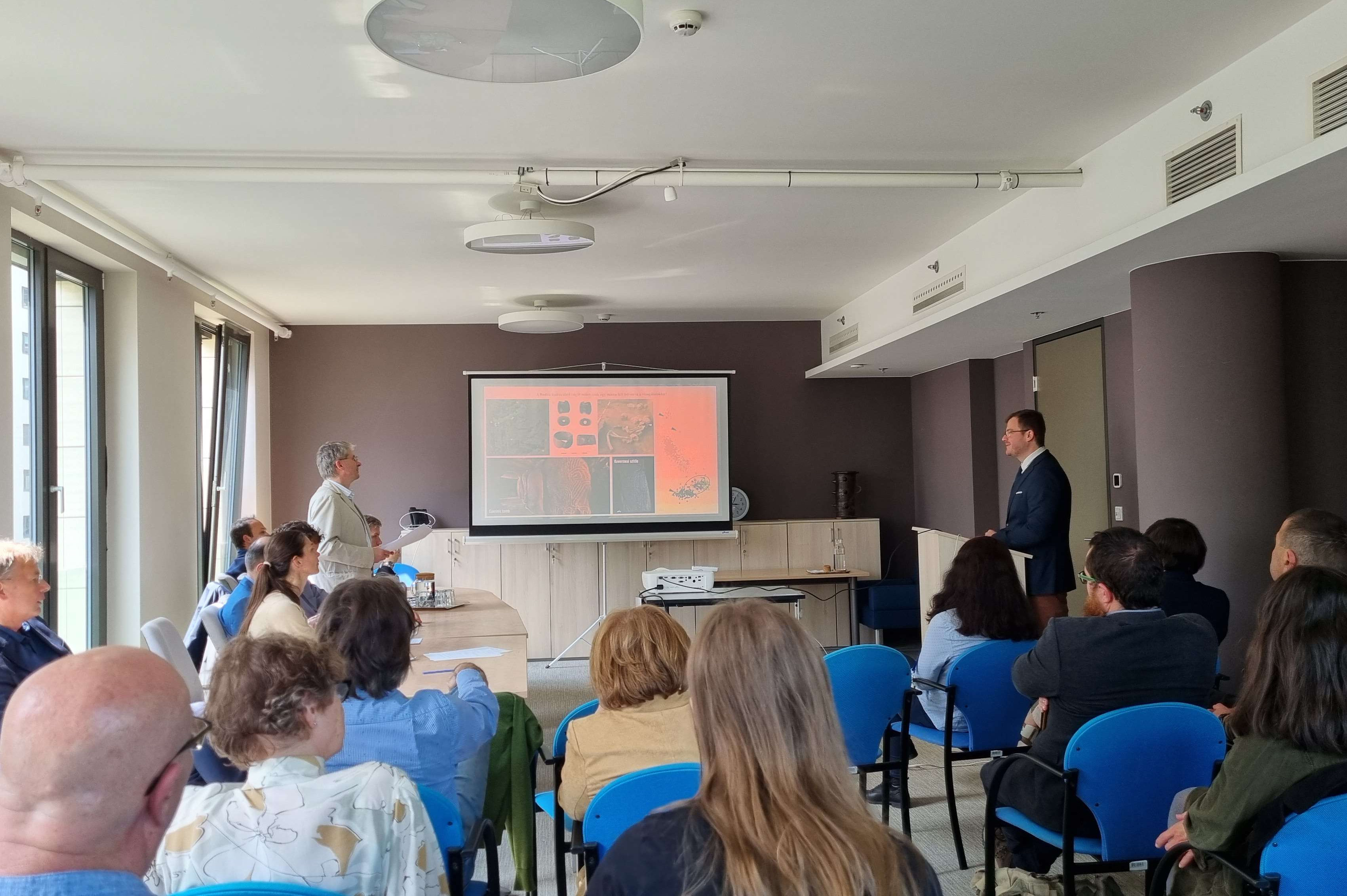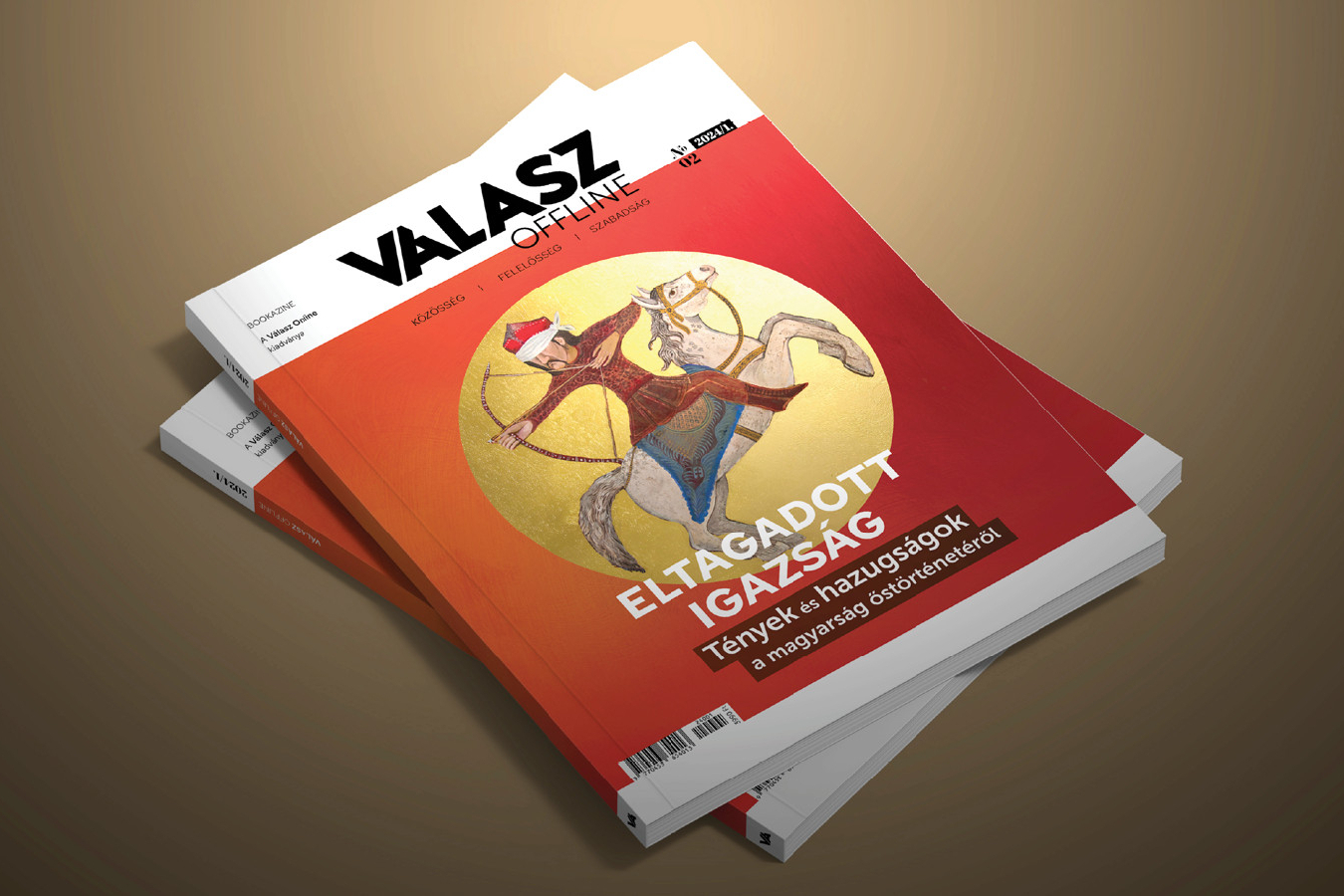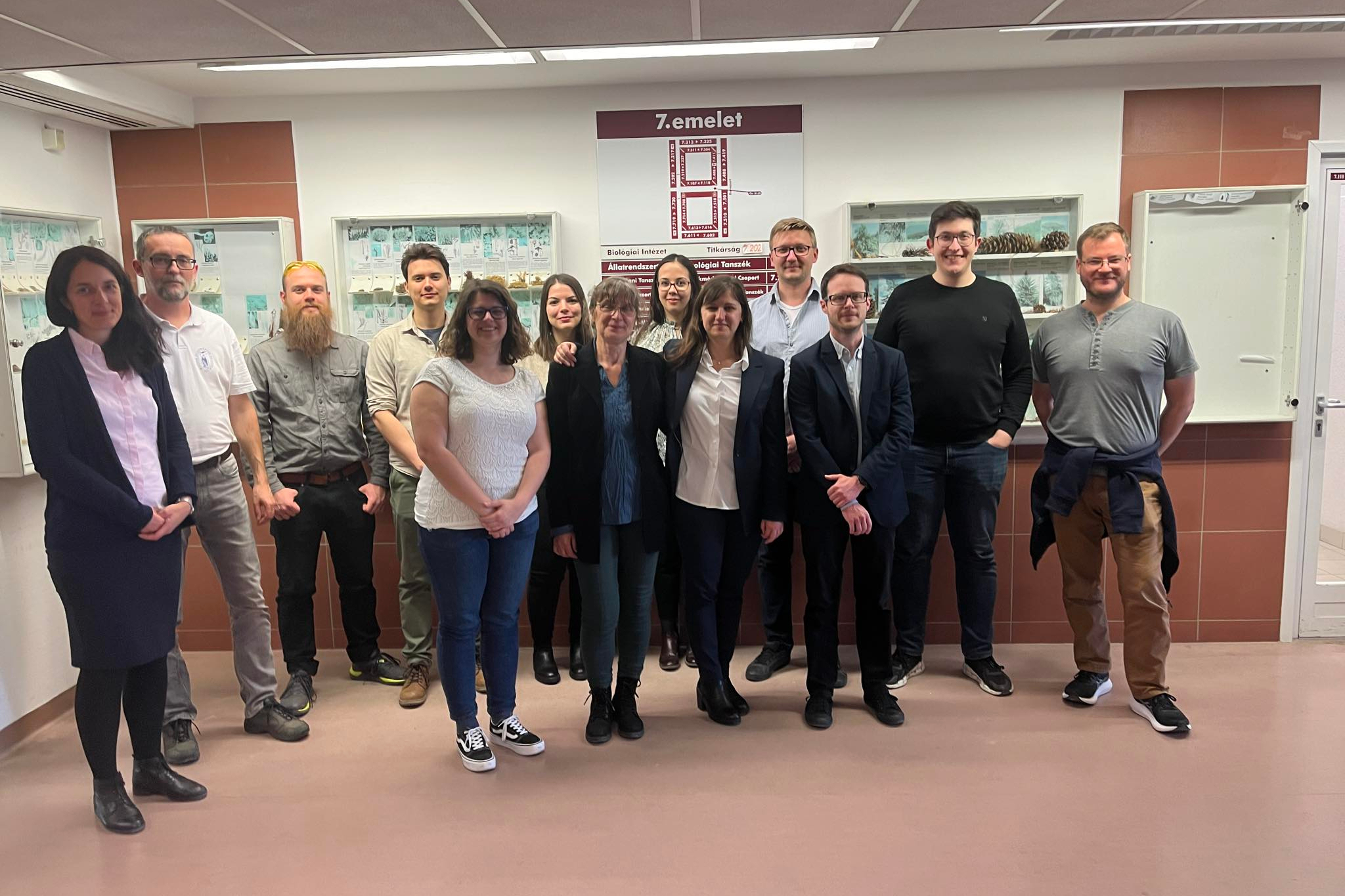ELTE Research Centre for the Humanities | 1097 Budapest, Tóth Kálmán utca 4. | HU15854939

New Genetic Research on the Genetic Composition of Hungarians from the Croatian Baranja and Zobor Regions
- Details
- Category: News
A recent study, published in the journal Scientific Reports by the Nature Publishing Group, explores the paternal and maternal genetic composition of Hungarian-speaking populations in the Baranja region of Croatia and the Zobor region of Slovakia. The study, first authored by Noémi Borbély, assistant research fellow at our institute and a PhD student at ELTE, aimed to map regional genetic similarities and differences in these relatively isolated, village-based communities.

Successful Doctoral Defense of Dániel Gerber
- Details
- Category: News
Dániel Gerber, a research fellow at our institute, submitted his doctoral thesis in English, titled "Development of Archaeogenetic Methodology Using Experimental Data" as a state scholarship student of the Genetics Doctoral Program at the ELTE TTK Biology Doctoral School.

Our institute's colleagues in the pages of the Válasz Offline bookazine
- Details
- Category: News
Our institute's colleagues – Noémi Borbély, Dániel Gerber, Balázs Gyuris, Balázs Mende, and Bea Szeifert – contributed to Válasz Online's recently published bookazine entitled "Válasz Offline".

Bea Szeifert successfully defended her doctoral dissertation
- Details
- Category: News
Bea Szeifert, a research fellow and scientific secretary at our institute, as a state scholarship holder of the Genetics Doctoral Program of the Biology Doctoral School at the Faculty of Science, Eötvös Loránd University (ELTE), submitted her doctoral dissertation titled "Archaeogenetic Analysis of Human Skeletal Material from Volga-Ural Region Cemeteries Associated with Early Hungarians."
More Articles …
Page 7 of 14


